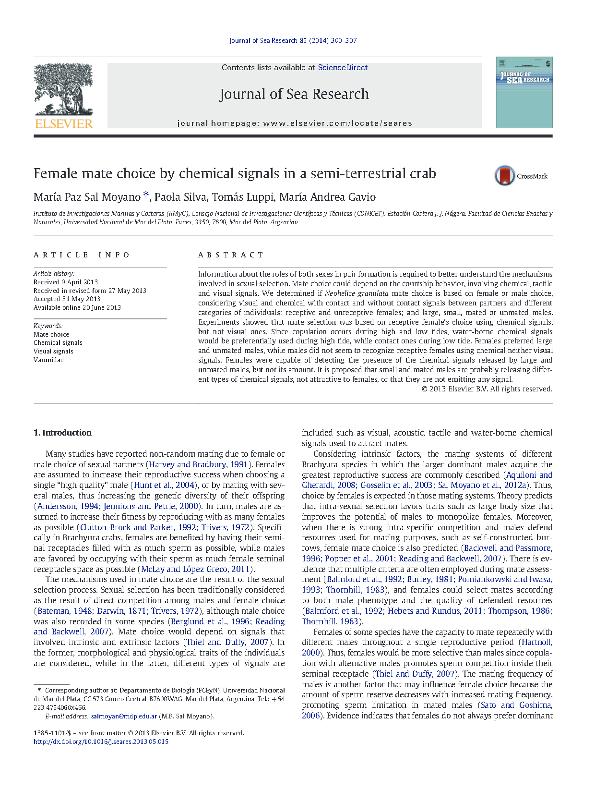Artículo
Female mate choice by chemical signals in a semi-terrestrial crab
Fecha de publicación:
05/2014
Editorial:
Elsevier Science
Revista:
Journal of Sea Research
ISSN:
1385-1101
Idioma:
Inglés
Tipo de recurso:
Artículo publicado
Clasificación temática:
Resumen
Information about the roles of both sexes in pair formation is required to better understand the mechanisms involved in sexual selection. Mate choice could depend on the courtship behavior, involving chemical, tactile and visual signals. We determined if Neohelice granulata mate choice is based on female or male choice, considering visual and chemical with contact and without contact signals between partners and different categories of individuals: receptive and unreceptive females; and large, small, mated or unmated males. Experiments showed that mate selection was based on receptive female's choice using chemical signals, but not visual ones. Since copulation occurs during high and low tides, water-borne chemical signals would be preferentially used during high tide, while contact ones during low tide. Females preferred large and unmated males, while males did not seem to recognize receptive females using chemical neither visual signals. Females were capable of detecting the presence of the chemical signals released by large and unmated males, but not its amount. It is proposed that small and mated males are probably releasing different types of chemical signals, not attractive to females, or that they are not emitting any signal.
Palabras clave:
Mate Choice
,
Chemical Signals
,
Visual Signals
,
Varunidae
Archivos asociados
Licencia
Identificadores
Colecciones
Articulos(IIMYC)
Articulos de INSTITUTO DE INVESTIGACIONES MARINAS Y COSTERAS
Articulos de INSTITUTO DE INVESTIGACIONES MARINAS Y COSTERAS
Citación
Sal Moyano, María Paz; Silva, Paola Valeria; Luppi, Tomas Atilio; Gavio, Maria Andrea; Female mate choice by chemical signals in a semi-terrestrial crab; Elsevier Science; Journal of Sea Research; 85; 5-2014; 300-307
Compartir
Altmétricas




